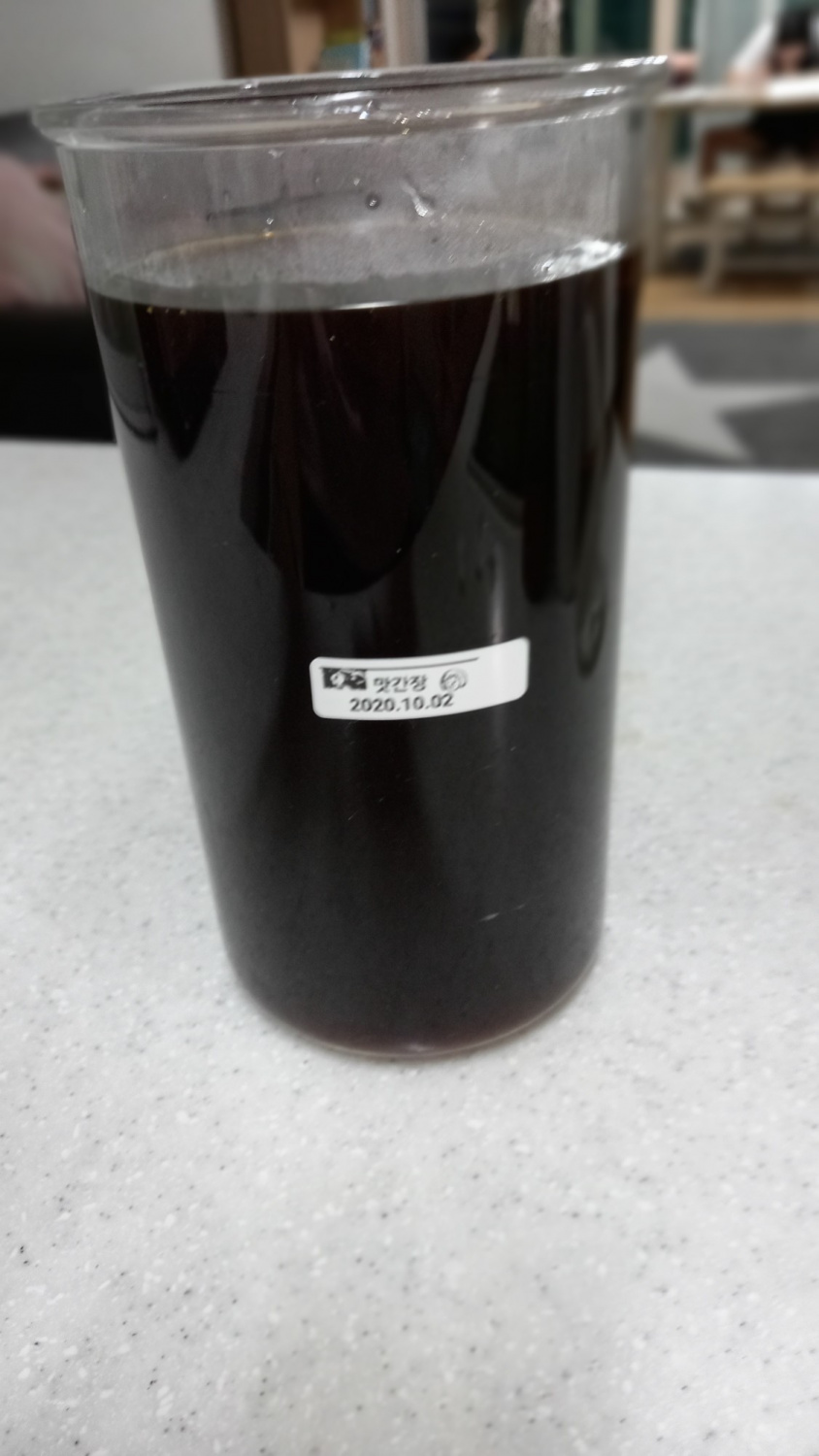All-Purpose Savory Soy Sauce (Mat-Ganjang)
How to Make All-Purpose Savory Soy Sauce (Lee Jung-hyun’s ‘Pyeonstorange’ Version)

Is your new soy sauce a bit too salty? Did your husband react with a grimace after a small taste? It’s time to transform that overly salty soy sauce into a versatile, all-purpose savory soy sauce! Once you have this on hand, making braised dishes becomes incredibly easy, and it’s also perfect for seasoning seasoned vegetables (namul). I used this batch to marinate pork ribs, a favorite of my children, and even to braise quail eggs.
Ingredients for All-Purpose Savory Soy Sauce- 1.5 liters Anchovy Broth
- 1.3 liters Soy Sauce (adjust based on your soy sauce’s saltiness)
- 2 cups Cooking Wine (Mirin or Cheongju) (using 3 cups can help reduce saltiness)
- 1/2 Onion
- 1 stalk Green Onion (Leek)
- 1 cup Bonito Flakes (Katsuobushi)
- 1 Lemon
- 2/3 cup Sugar
- 3 cups Goji Berry Syrup (Gugija Cheong) (can substitute with Yuzu Syrup if preferred)
- 1 cup Ginger Syrup (or Ginger Wine)
Cooking Instructions
Step 1
First, prepare the broth that will form the base of your savory soy sauce. While Lee Jung-hyun’s recipe uses anchovy broth, I used my own homemade broth which I typically use for stews and soups. Combine dried anchovies, kelp, dried shrimp, dried pollack strips, and a piece of radish, then simmer to create a rich broth.

Step 2
Once the broth has a milky, rich color, set aside 1.5 liters to be used for the savory soy sauce. A flavorful broth is key to enhancing the overall taste of the sauce.

Step 3
Now it’s time to add the soy sauce. Typically, you’d use an equal volume of broth and soy sauce. However, since my household soy sauce is quite salty, I only added 1.3 liters. Adjust the amount based on the saltiness of the soy sauce you use at home.

Step 4
To impart a delicious smoky flavor, grill half an onion and one stalk of green onion on a grill rack until nicely charred. The smoky aroma released from the roasted vegetables will significantly enhance the soy sauce’s depth of flavor.

Step 5
Lee Jung-hyun’s recipe calls for 1 cup of Cheongju (rice wine), but because my soy sauce was salty, I added 3 cups of cooking wine (Mirin or Cheongju). Cooking wine helps to balance the saltiness and adds a smoother flavor profile.

Step 6
I’m adding 1 cup of ginger syrup, which I had made using leftover ginger from making ginger wine recently. The subtle spiciness of ginger will cut through any richness in the soy sauce and add a refreshing quality.

Step 7
Next, add 3 cups of sweet goji berry syrup (Gugija Cheong) that my mother-in-law gave me. Lee Jung-hyun’s version sometimes uses yuzu syrup instead of ginger and goji berry syrup, so feel free to substitute based on your preference. Goji berry syrup adds a gentle sweetness and fragrant aroma.

Step 8
Prepare one lemon. Finely grate the zest using a microplane to add its aromatic oils. Then, squeeze the juice from the remaining lemon half into the mixture. The lemon’s zest and juice will bring a bright, refreshing note to the deep flavors of the soy sauce.

Step 9
Add 2/3 cup of sugar to adjust the sweetness. Consider the overall sweetness you desire, balancing it with the other ingredients.

Step 10
Combine all the ingredients in a pot and bring to a boil. Once it boils vigorously, reduce the heat to low and simmer for a short while. Then, turn off the heat and add 1 cup of bonito flakes through a sieve. Allow the bonito flakes to steep and infuse their umami flavor into the soy sauce.

Step 11
Once the soy sauce has cooled slightly, strain it one more time through a fine-mesh sieve and pour it into a clean glass bottle. Your delicious all-purpose savory soy sauce is now complete! With this one versatile sauce, preparing side dishes will become significantly easier, and the quality of your meals will elevate. Store it in the refrigerator and enjoy using it in your cooking!




